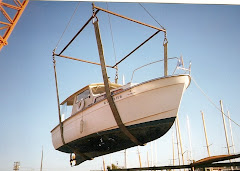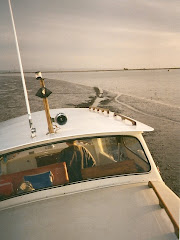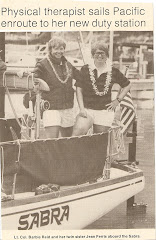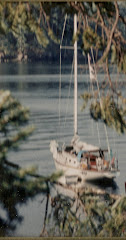26 May 1792, Saturday- Day 7: Eld Inlet, Budd Inlet, Johnson Point, and to the HMS Discovery.
At dawn the boats headed for Cooper Point, which is the sharp-beaked point of peninsula which divides Eld and Budd inlets. They were unable to make their way to the termination of Eld inlet because of the severe shallows. They were met by canoes of the most hospitable and friendly Indians thus far. Lt. Puget was interested in them, so followed them to their village of open walled sheds, housing about 60 natives. This location was southwest of Flapjack Point. They were all busy, skinning animals, smoking fish, and cooking other foods. The stench was the worst he had smelled. While some of the men were dressed in warrior like outfits made of animal skins, they carried no weapons. Unlike other tribes, these Indians wore exotic make-up of red ochre/ black glimmer, their hair was covered in down from young birds. They took great delight in seeing themselves through the mirrors which were given to them by the explorers. Peter Puget called this place, “Friendly Inlet” and made notes stating of all the natives they had seen, these were the most terrifying looking, while their behavior was just the opposite.This puts the old saying in perspective, “ don’t judge a book by it’s cover”.
They made their way back out the inlet and entered Budd Inlet, traveling to the mud flats at its termination. Mr. Whidbey accurately takes today’s current latitude of 47°03’ N of the capitol city of Olympia. Lt. Puget realizes that after exploring all these miles, the Northwest Passage did not exist in these waters and, in fact they all ended in tidal mud flats and marshes. There was a southwesterly breeze, the tide was ebbing, so Lt. Puget ordered the masts to be stepped, the oars stowed and the sails hoisted. While, not noted in Lt. Puget’s, nor Menzies journal, some historians say they made a meal stop on the southern side of Johnson Point at Henderson Inlet.
They continued sailing and passed Long Island-Ketron Island at dusk. They could see a fire and thought it to be natives, however, it was in fact Captain Vancouver and a small group of men. They noticed the boats and fired several rounds of ammunition, but the exhausted explorers did not hear them. They continued to make their way to the HMS Discovery, arriving at 0200 hrs. on Sunday 27 May 1792.
Mr. Menzies noted in his journal, upon arriving at our departure anchorage we could not see our mother ship, the HMS Discovery. We fired off some shots from the swivel guns, to which the ship responded and located their anchorage, which was nearer and inside of the point.
The HMS Chatham had joined the anchorage 2 days earlier and Captain Vancouver had departed with 2 longboats to explore the eastern bay of Tacoma’s Commencement Bay, and Case Inlet. Thus ending the southern exploration by Lt. Peter Puget, Mr. Whidbey and Mr. Menzies and Lt. Manby. After Lt. Puget’s exploration of the southern waters from 20-27 May 1792, Captain Vancouver named the southern waters, Puget’s Sound.
3/4 June 1792: Captain Vancouver finally gave the explorers 2 days of well deserved rest where a great feast was held, everyone got extra grog and in their finest attire of dress uniforms they celebrated the birthday of King George III. In a ceremony on shore, drums rolled and Ship's guns were fired as the flag was raised. He proclaimed that the entire area of all the inland sea be known as the "Gulph of Georgia".
Day’s Run:64nm
Total Run: 162nm
 |
| Points of Exploration |















